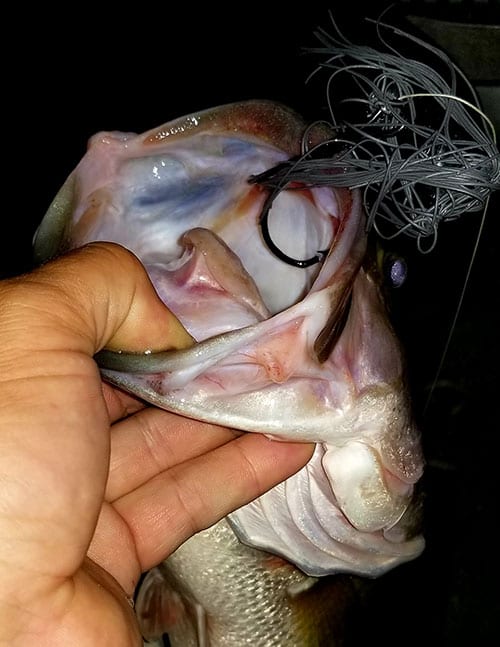The dog days of summer have set in and the frequency of bites is tapering off. Water temperatures have exceeded the 80-degree mark and the approaching 90-degree temperatures are in sight for some places. If you are to be productive on your catches, a change in plans must happen. This is the time of year so many avenues will work to remedy the problems with bite shutdowns.
Fishing at night is the most productive time to fish for bass in more ways than one. First, you have falling water temperatures that occur after sunset and into the morning, until sunrise. This allows for active feeding and relief from high temperatures with low oxygen levels. Second, the human activity from boat traffic and swimmers is not present. Large, smart bass will come out to feed, as they feel little to no pressure just from the drop in water activity. This will give an angler the edge to land one of those true giants. Moon phases also make the bite predictable, as bass will feed more aggressively closer to the full moon. The full moon will also aid the angler by making it easier to see where you cast without the use of lights, which gives you a stealthy approach.
If you have to fish in the daytime, there are options for that as well. The mornings are always great for a topwater bite and as the day progresses they will transition to the deep water drop-offs. When fishing deep, they can be very aggressive so when you find a school of bass, you can use deep water reaction type baits such as deep diving crank baits. Running a reactive bait through a school of bass can cause them to fire up and become unglued. Pay attention when you keep catching smaller fish in a school because this is when a large fish can get caught up in all the excitement and, it could be your chance at a personal best. When you see them on your graph and they’re suspended, or not in the mood, you can use a spy bait or finesse tactics to force them to feed.
The option of going to the backs of creeks looking for currents and waterfalls where water is rich in oxygen is a good plan for finding active fish. Grass beds and Lilly pads are another choice for oxygen rich water areas as well. This provides a situation where you can catch them with just about any bait you own. Frog fishing and lipless crank baits come to mind when fishing vegetation. Jigs, worms, swim baits, and jerk baits are good for rocky bottoms.
Making plans to fish a front blowing in, or the middle of storms, will give you great results due to the barometric pressure drop. This is, over all, the best times fish will feed in any situation. Baits with a rattle or lots of displacement of water will be a good choice since you’re dealing with wind and rain.
If you apply one of these plans to your summertime routine you can find ways around the problems with high water temperatures. Hope this helps guys and good luck out there this summer.
Scott Norton is a native of Western North Carolina. Born in Asheville, NC, he is a long time avid hunter, angler, and weekend warrior. He is a member of Southern Raft Supply’s prostaff team representing them in his Jackson Kayak Coosa FD.
